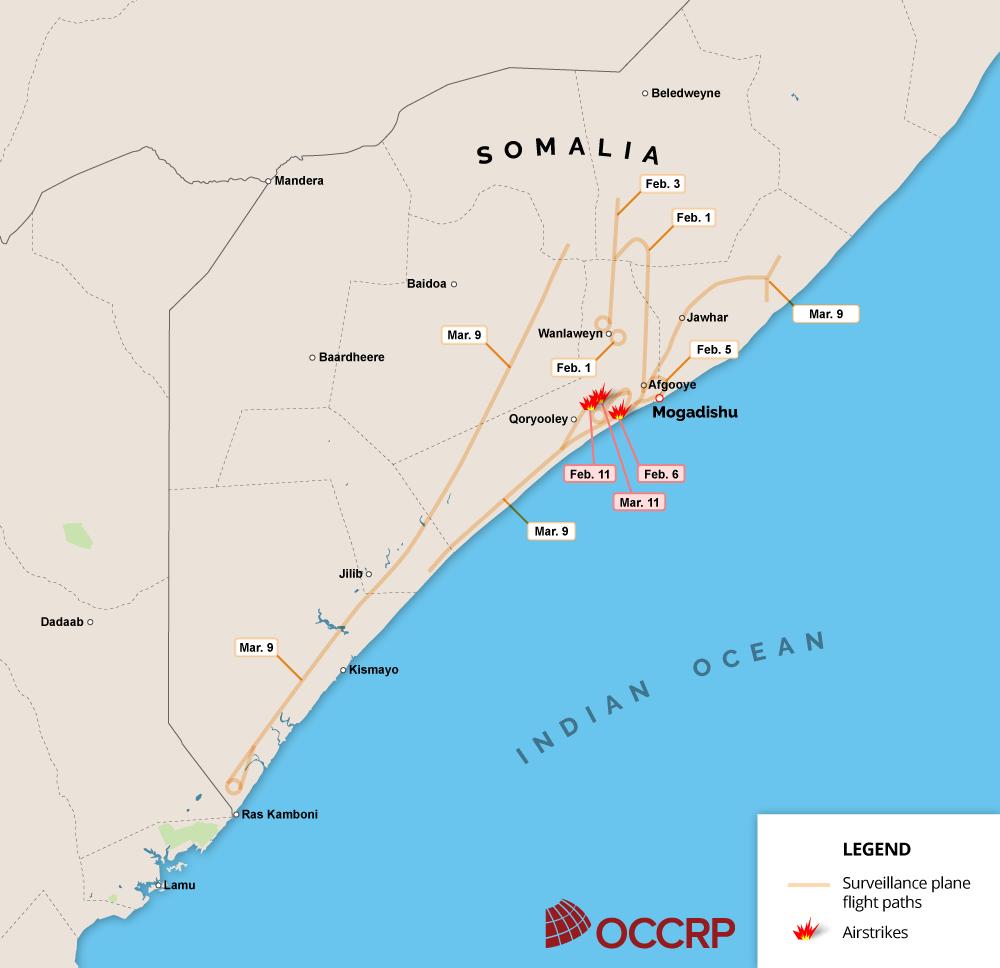As many authors have documented, the global elite is conducting a coup to take complete control of our lives. It is doing this by using the ‘virus’ to terrorize the human population into believing that we will ‘catch’ Covid-19 if we do not submit to draconian restrictions on our rights and freedoms.
And while the elite is conducting its coup, the most important challenges that confront our world are being largely ignored, as I will briefly discuss below.
If you are not already familiar with it, you can read (or watch) a sample of the overwhelming evidence that reports on the virus are vastly exaggerated and distorted:
‘Unmasking the Lies Around COVID-19: Facts vs Fiction of the Coronavirus Pandemic’,
‘COVID19 PCR Tests are Scientifically Meaningless’,
‘Death by killing old people, not COVID – The Basic Deception’,‘An Inconvenient Covid-19 Truth: Dr Andrew Kaufman and Del Bigtree’ (republished after being taken down)
and ‘COVID-19 Does Not Exist: The Global Elite’s Campaign of Terror Against Humanity’.
Most notably, perhaps, Torsten Engelbrecht and Konstantin Demeter, the authors of the second reference cited above, wrote to the authors of four of the principal, early 2020 papers claiming discovery of a new coronavirus and each of them in their response ‘concede[d] they had no proof that the origin of the virus genome was viral-like particles or cellular debris, pure or impure, or particles of any kind. In other words, the existence of SARS-CoV-2 RNA is based on faith, not fact.’
Moreover, Engelbrecht and Demeter also wrote to Dr Charles Calisher, a prominent and veteran virologist, asking if he knew of ‘one single paper in which SARS-CoV-2 has been isolated and finally really purified’. His answer? ‘I know of no such a publication. I have kept an eye out for one.’
But you can read the paper by Engelbrecht and Demeter if you want to consider the other efforts they made, unsuccessfully, including by contacting prominent institutions such as the Robert Koch Institute in Germany, to locate documented proof that a purified SARS-CoV-2 virus had been isolated.
And in the video above titled ‘An Inconvenient Covid-19 Truth’, Dr Andrew Kaufman states:
‘There is not one scientist who has isolated or purified a virus and made a concrete association with a new illness…. There have been spikes in mortality around the world in different places but we need to look for other causes or explanations for that since there is no solid evidence that there is a virus causing anything.’
So why are some people dying? Some are dying from pre-existing health conditions (‘comorbidities’), some are dying from influenza (as happens to 650,000 people each year: see ‘
Up to 650 000 people die of respiratory diseases linked to seasonal flu each year’), some are dying as a result of living in a toxic environment – see
‘The China lockdown: origin of the war against the population of Earth, pretense of containing the virus’– some are dying in response to the deployment of 5G technologies, some are dying from the fear and other emotional responses to the isolation in which they have been imprisoned, and some are dying of unrelated causes falsely attributed to Covid-19, as the many articles and videos on the statistical manipulation have exposed.
See, for example, ‘COVID 19 Is A Statistical Nonsense’.
Given the categorical science that this virus does not exist, it is clear that the restrictions already imposed, and those that will be imposed, supposedly to tackle this non-existent infection labeled Covid-19, make history’s worst despots – as well as those depicted in dystopian novels and films – look benevolent by comparison.
This is because the intended and ongoing consequences of these restrictions, if they are all successfully implemented, will be catastrophic: those human beings still alive will be reduced to digitized identities controlled by forces literally beyond their perception and one (presumably) unintended consequence of this coup will be the extinction of our species. Let me explain why.
The Elite Coup
If you have not been following the literature in relation to the ongoing coup and its rapidly accumulating costs, you can read a sample from the most recent documentation here:
Economist and geopolitical analyst Peter Koenig, formerly of the World Bank, in ‘IMF and WEF – From Great Lockdown to Great Transformation. The Covid Aftermath’ notes as follows:
‘Deep-State-Actors’ behind the scene were using Covid to… cause a total lockdown of people as well as of the world economy…. This mighty lockdown order, instigated from ‘high-up’, way above the world’s governments and the UN, and with such co-opted ‘authorities’, like the WHO, has brought the world economy down on its knees within less than 6 months….
One of the opportunities the IMF sees emerging from this crisis, is ‘the digital transformation – a big winner from this crisis’. The IMF doesn’t say what it means, but it requires foremost digitizing people’s identity and digitizing money – total control over people’s movements, health records, cash flow, bank accounts and more. See also ‘The Coronavirus COVID-19 Pandemic: The Real Danger is “Agenda ID2020”.
Former Air Force Captain David Skripac in ‘What Are the Truly Verifiable Facts Surrounding COVID-19?’ summarizes the non-existent or flawed science around the existence of the SARS-CoV-2 RNA virus, the diagnostic testing, the use of masks and the claim that the Infection Fatality Rate (IFR) for COVID-19 is far greater than the seasonal influenza, and concludes as follows:
What is certain, though, is that all of the medical martial law edicts that have been issued in united fashion have been based on unsubstantiated science. Equally clear is that the drive for a global COVID-19 vaccine regimen and the global surveillance grid are moving ahead in concert to transform the world as we know it – ifwe allow it to happen.
Professor Michel Chossudovsky in his recently republished timeline ‘COVID-19 Coronavirus “Fake” Pandemic: Timeline and Analysis’ outlining events leading up to and then immediately following declaration of the pandemic by the World Health Organization on 30 January 2020, carefully documents such points as Event 201 held in New York in October 2019, and notes the following:
What we are dealing with is ‘economic warfare’….
Our… analysis reveals that powerful corporate interests linked to Big Pharma, Wall Street and agencies of the US government were instrumental in the WHO’s far-reaching decision.
What is at stake is the alliance of ‘Big Pharma’ and ‘Big Money’, with the endorsement of the Trump Administration. The decision to launch a fake pandemic under the helm of the WHO on January 30, was taken a week earlier at the Davos World Economic Forum (WEF). The media operation was there to spread outright panic.
We are dealing with a complex global crisis with far-reaching economic, social and geopolitical implications.
US constitutional attorney John W. Whitehead in his article ‘One Nation Under House Arrest: How Do COVID-19 Mandates Impact Our Freedoms?’ documents the extensive and ongoing encroachments on rights and freedoms in the USA and highlights the following:
On a daily basis, Americans are already relinquishing (in many cases, voluntarily) the most intimate details of who we are – their biological makeup, our genetic blueprints, and our biometrics (facial characteristics and structure, fingerprints, iris scans, etc.) – in order to navigate an increasingly technologically-enabled world.
COVID-19, however, takes the surveillance state to the next level.
There’s already been talk of mass testing for COVID-19 antibodies, screening checkpoints, contact tracing, immunity passports to allow those who have recovered from the virus to move around more freely, and snitch tip lines for reporting ‘rule breakers’ to the authorities….
In this post-9/11 world, we have been indoctrinated into fearing and mistrusting one another instead of fearing and mistrusting the government. As a result, we’ve been forced to travel this road many, many times with lamentably predictable results each time: without fail, when asked to choose between safety and liberty, Americans historically tend to choose safety.
Failing to read the fine print on such devil’s bargains, ‘we the people’ find ourselves repeatedly on the losing end as the government uses each crisis as a means of expanding its powers at taxpayer expense.
And, technologically, it is now incredibly easy to do this in many ways.
In one of his ongoing videos (that, so far, has not been censored) about the Covid-19 coup – this one titled ‘This Couldn’t Possibly Happen. Could it?’ the transcript for which can be accessed by clicking the ‘Health’ tab after entering his website– the UK’s Dr Vernon Coleman explains one sinister aspect of this technological control:
If you were a mad doctor and you wanted to control an individual it would be a doddle.
You’d just tell them you were giving them an injection to protect them against the flu or something like that and in the syringe there would be a little receiver. And then you’d stick a transmitter on the roof of the house across the road from where they lived.
And then you could send messages to make them do whatever you wanted them to do. You could make them sad or angry or happy or contented. You could make them run or fight or just spend all day in bed.
Remember, that’s what Dr Delgado was doing over half a century ago. It’s nothing new.
Of course, if you wanted to do the same thing for lots of people you’d need a whole lot of people to help you….
And you’d need something to inject into people. A medicine of some kind for example.
And then you’d need someone good at software to help with all the transmitting and the receiving and you’d need people with access to lots of tall poles or roofs where they could put the transmitter things.
But none of that would be any good unless you had a reason for injecting people. You can’t just go around injecting millions of people for no reason.
Ideally, you’d need them all to be frightened of something so that they were keen to let you inject them. And then you could put your tiny receivers into the stuff that was being injected. Or squirted up their noses or whatever.
Whitney Webb provides further insight into the elite intention in this regard. In one of her meticulously-researched articles – ‘Coronavirus Gives a Dangerous Boost to DARPA’s Darkest Agenda’– she outlines the hidden technological agenda behind the Covid-19 coup that might well be delivered as part of any vaccination program by the Pentagon’s Defense Advanced Research Projects Agency (DARPA). After carefully outlining the history and ‘logic’ of what is taking place, she concludes with the chilling words:
Technology developed by the Pentagon’s controversial research branch is getting a huge boost amid the current coronavirus crisis, with little attention going to the agency’s ulterior motives for developing said technologies, their potential for weaponization or their unintended consequences….
This is especially true given that – without a major crisis such as that currently dominating world events – people would likely be unreceptive to the widespread introduction of many of the technologies DARPA has been developing, whether their push to create cyborg “super soldiers” or injectable Brain Machine Interfaces (BMIs) with the capability to control one’s thoughts. Yet, amid the current crisis, many of these same technologies are being sold to the public as “healthcare,” a tactic DARPA often uses. As the panic and fear regarding the virus continues to build and as people become increasingly desperate to return to any semblance of normalcy, millions will willingly take a vaccine, regardless of any government-mandated vaccination program. Those who are fearful and desperate will not care that the vaccine may include nanotechnology or have the potential to genetically modify and re-program their very being, as they will only want the current crisis that has upended the world to stop.
In this context, the current coronavirus crisis appears to be the perfect storm that will allow DARPA’s dystopian vision to take hold and burst forth from the darkest recesses of the Pentagon into full public view. However, DARPA’s transhumanist vision for the military and for humanity presents an unprecedented threat, not just to human freedom, but an existential threat to human existence and the building blocks of biology itself.
In essence then, the ongoing elite coup is accelerating the so-called fourth industrial revolution as well as development of the technologies with which the Pentagon plans to fight future wars. If they succeed, you will only exist provided you have a biometric digital identity vaccinated into your body –
see ‘Africa to Become Testing Ground for “Trust Stamp” Vaccine Record and Payment System’– that confirms your existence, contains your vaccination record and your ‘authority’ to pay digital money.
But, as discussed by Dr Vernon Coleman and Whitney Webb, the ‘vaccine’ might well contain much more than that. In any case, you might not be relieved to know that this system will even work ‘in areas of the world lacking internet access or cellular connectivity’ and that it ‘does not require knowledge of an individual’s legal name or identity to function’.
Who you really are, as a human individual, will be irrelevant and will be largely gone: The nanotechnology in your body will have altered and redefined you. It will be used to control your behaviour in response to a digital signal controlled by others. Whether as worker or soldier, you will do as directed to serve elite ends, no longer having volition of your own.
If this is not enough to convince you of what is at stake, you can read further itemization of the adverse impacts of this coup in other articles such as
‘The Elite’s COVID-19 Coup Against a Terrified Humanity: Resisting Powerfully’ and
‘How the Covid-19 Crisis Affects Individual Rights and Freedoms. A New Crisis in International Law?’
And you can access a substantial list of resources carefully compiled by Roger Brown in ‘The Covid-Lockdown Crisis – Alternative Info & Sources’.
Of course, you do not need to believe the scholars I have cited above. Major elite organizations, such as the World Economic Forum (WEF), have been equally clear, even if they cast what is happening rather more positively given their role in generating the Covid-19 ‘crisis’ to precipitate the coup in the first place. In its document ‘The Great Reset: A Unique Twin Summit to Begin 2021’ the WEF candidly notes that:
COVID-19 has accelerated our transition into the age of the Fourth Industrial Revolution.
But given the deeper agenda of which the fourth industrial revolution (with its military implications) is only a part, the WEF also notes in its recent report, without even a hint of irony after citing a report by sustainability experts – see ‘Scientists’ warning on affluence’– that:
Affluence is the biggest threat to our world…
True sustainability will only be achieved through drastic lifestyle changes… rather than hoping that more efficient use of resources will be enough.
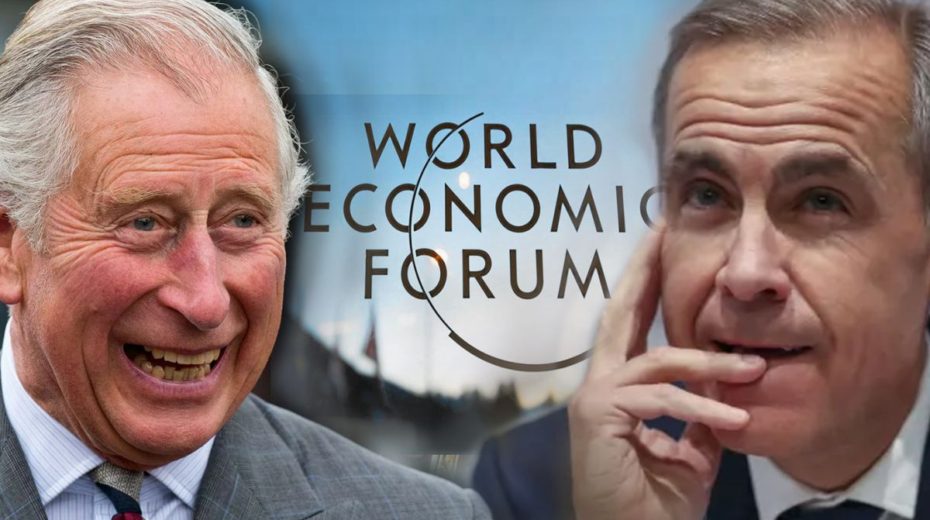 The World Economic Forum has called for a great reset of capitalism in the wake of the pandemic. See ‘This is now the world’s greatest threat – and it’s not coronavirus’.
The World Economic Forum has called for a great reset of capitalism in the wake of the pandemic. See ‘This is now the world’s greatest threat – and it’s not coronavirus’.
Of course, it is entirely possible that the WEF has not heard of Mahatma Gandhi who modeled and espoused substantially reduced consumption more than 100 years ago while also modeling and advocating local self-reliance – ‘Earth provides enough for every person’s need but not for every person’s greed’ – and those activists and experts who have lived and/or articulated such a course since Gandhi.
But, then again, does the WEF really mean what it sounds like it means? Is the global elite about to forego its affluence and return its wealth to those billions of impoverished people who are just the latest of many generations from whom the elite has stolen virtually everything through military conquest, an economic system and other structures of exploitation that ‘allocate’ resources in accord with mechanisms over which ‘ordinary’ people have no control?
Or is the global elite more interested in a new series of mechanisms that further impoverish the human population and exploit the natural world, particularly if the bulk of the human population has been effectively robotized by the nanotechnology in the Covid-19 vaccine and can simply be directed to work (or kill in war), irrespective of working conditions and recompense?
Ignoring the Challenges that Really Threaten Us
But the coup to take greater control of our lives is just one of the many adverse outcomes that we can expect and this is why human extinction, by any of four separate paths, is a likely outcome.
Whether by the ongoing demolition of weapons control agreements –
see ‘Trump’s War On Arms Control and Disarmament’– endlessly fighting and provoking wars –
see ‘Largest U.S. Seizure of Iranian Fuel from Four Tankers’(although this has since been contradicted by Iran) – and even courting the risk of nuclear war –
see ‘Kremlin Warns The US Of Nuclear Retaliation If Russia Or Her Allies Are Targeted’– the current US-generated military environment has not been this close to nuclear armageddon at any time in history. Unfortunately, things have deteriorated dramatically since the Bulletin of the Atomic Scientists 2020 Doomsday Clock Announcement back in January ‘Closer than ever: It is 100 seconds to midnight’.
Of course, it should be noted, the fundamental driver of these latest regressive developments (which simply add to those many regressive developments that have preceded them) is the US nuclear doctrine that has been in place since 2003. As explained by Professor Michel Chossudovsky: ‘The Hiroshima Day 2003 meetings had set the stage for the “privatization” of nuclear war…. This long war against humanity is [now being] carried out at the height of the most serious economic crisis in modern history. It is intimately related to a process of financial restructuring which has resulted in the collapse of national economies and the impoverishment of large sectors of the world population. The ultimate objective is world conquest.’
Watch ‘Secret Meeting on the Privatization of Nuclear War Held on Hiroshima Day 2003’.
And in case you believe that ‘world conquest’ is fanciful, consider the following. As mentioned above, the technology now available after decades of effort enables receiver nanochips to be sprayed, injected or otherwise implanted into human bodies. With the ongoing deployment of 5G (which includes extensive space and ground-based technologies), it will be possible to direct the individual behaviour of each of those people. Given that the control technology will be owned by corporate executives, here are just four examples of how the elite might direct that it be used (more or less as a ‘drone pilot’ sitting in the United States controls a drone flying in the Middle East that fires weapons on local people):
- The official chain of command to launch nuclear weapons can be subverted by using remote control to direct the chosen individual in a particular chain of command to order (or execute) the launch of one or more nuclear weapons at the target(s) nominated at the time(s) specified. Subordinates can be directed to follow orders they might otherwise question.
- ‘Cyborg soldiers’ (either as mercenaries or formal military personnel) in groups or as individuals can be deployed anywhere to fight as ordered by those in charge of their remote controls.
- ‘Cyborg workers’ can be instructed to work in dangerous conditions for extended periods and simply be replaced as required. Someone else close by will have been vaccinated too.
- Activists on any issue can simply to be instructed to refrain from further involvement in their campaign. Or to actively take the opposite position to the one they had previously.
Anyway, just briefly on the other three imminent threats to human survival.
The climate remains under siege. Despite elite propaganda to the contrary, Earth passed 2°C above the 1750 (preindustrial) baseline in February 2020 – see ‘Crossing the Paris Agreement thresholds’ and ‘2°C crossed’– and given that carbon dioxide emissions generate ‘maximum warming’ about one decade after the emission actually occurred – see ‘Maximum warming occurs about one decade after a carbon dioxide emission’– ‘the full warming wrath of the carbon dioxide emissions over the past ten years is still to come’. See ‘2°C crossed’.
However, with even most activists accepting the elite-driven narrative in relation to Covid-19, efforts to curb the climate catastrophe are largely on hold despite the fact that ‘global warming is rampaging, running amuck’ with fires in eastern Siberia – ‘the very region of the planet that’s famous for the coldest temperatures of all time… now recording Miami-type summer temperatures’ – according to NASA satellite images ‘depict[ing] an inferno of monstrous proportions’ with which ‘nothing in modern history compares’. See ‘Freakish Arctic Fires Alarmingly Intensify’.
And having mentioned fires, how is the Amazon going after last year’s disastrous season? Not well, according to this latest report: ‘More than 260 major, mostly illegal Amazon fires detected since late May’.
But if fires in Siberia and the Amazon do not concern you, did you realize that the warming temperature is now causing methane to leak from Antarctica (not just the Arctic) too? See ‘Riddles in the cold: Antarctic endemism and microbial succession impact methane cycling in the Southern Ocean’ and ‘As Planet Edges Closer To Climate Tipping Points, Scientists Identify Methane Gas Leak In Antarctica’.
Moreover, while the global industrial shutdown has temporarily reduced emissions of carbon dioxide, methane and nitrous oxide, it has also significantly reduced the aerosol masking effect generated by burning fossil fuels as explained by Professor Guy McPherson in his recently-published paper ‘Will COVID-19 Trigger Extinction of All Life on Earth?’ For reasons he carefully explains in his paper, McPherson concludes:
The ongoing reduction in industrial activity as a result of COVID-19 almost certainly leads to loss of habitat for human animals, hence putting us on the fast track to human extinction.
Apart from the serious threat of nuclear war and the accelerating climate catastrophe, in their latest paper Professor Gerardo Ceballos and his colleagues provide further evidence of the ongoing ‘biological annihilation’ of life on Earth and what it means for ecosystem functioning while documenting the complicating factors that have arisen during the COVID-19 crisis because capturing wildlife for trade or food was one backup economic survival option for many people when other options were shut down.
‘Even though only an estimated 2% of all of the species that ever lived are alive today, the absolute number of species is greater now than ever before. It was into such a biologically diverse world that we humans evolved, and such a world that we are destroying…. Millions of populations have vanished in the last 100 years…. The reason so many species are being pushed to extinction by anthropogenic causes is indicated by humans and their domesticated animals being some 30 times the living mass of all of the wild mammals that must compete with them for space and resources’. But, Dr Ceballos adds: ‘Many of the species endangered or at the brink of extinction are being decimated by the legal and illegal wildlife trade.’ See ‘Vertebrates on the brink’.
But if you want another account, you can read a solid summary in the latest media release of the Intergovernmental Science-Policy Platform on Biodiversity and Ecosystem Services (IPBES) here:
‘Nature’s Dangerous Decline “Unprecedented”; Species Extinction Rates “Accelerating”’.
And for just one of the latest accounts in the ongoing stream of disasters,
see ‘Calls for swift action as hundreds of elephants die in Botswana’s Okavango Delta’.
Of course, while the World Economic Forum does not even list electromagnetic radiation (or nuclear war, for that matter) as one its top ten ‘risks’ –
see ‘The Global Risks Report 2020’– because its plan to implement the fourth industrial revolution (with its profound implications for the future of warfare) depends on the deployment of 5G, this deployment is already wreaking havoc (and presumably a driver of at least some of the ill-health and deaths falsely attributed to Covid-19) and is another path to imminent human extinction.
See ‘Deadly Rainbow: Will 5G Precipitate the Extinction of All Life on Earth?’
Apart from other, locally disastrous outcomes, this deployment means that the existing fleet of functional satellites orbiting Earth, which totaled 2,666 on 1 April 2020 – see ‘Satellite Database’– but has already grown by a couple of hundred since then, will be vastly expanded to 100,000 in the near future.
This will disturb, in a way that goes profoundly beyond all previous disturbances, the global electrical circuit, that evolved over eons and sustains all life.
In short, we will have fundamentally altered the very conditions that made the evolution of life on Earth possible.
So why is this all happening?
The coup being conducted by the global elite, that is also fast-tracking four paths to human extinction, is a direct outcome of their unconscious terror and the insanity this causes. The elite is not capable of considering ‘the big picture’ because each member of the elite, as well as all those who serve it, is trapped in a confined psychological state that makes them incapable of perceiving or behaving beyond the terrified imperative to endlessly seek control. This outcome is the direct result of the violence they each suffered as a child and which now leads them to endlessly but dysfunctionally seek the control they were denied as a child. See ‘Why Violence?’ and ‘Fearless Psychology and Fearful Psychology: Principles and Practice’.
In essence, a terrorized child will result in an equally terrified and powerless adult. Powerless individuals are so terrified that they will not get what they want that they fear the idea of cooperation for mutual benefit. Hence, they must endlessly seek total control so that they will feel ‘safe’. Of course, safety based on control of this nature is a delusion and, even if it could be achieved, is dysfunctional. This is partly why the elite coup, which is designed to give them total control, fails to take account of factors beyond the coup, particularly including the paths to extinction they are accelerating.
In contrast, powerful individuals are happy to negotiate in an atmosphere that allows conflicting parties to explore mutually beneficial outcomes. They readily understand that others have needs and these can be met without undermining the satisfaction of their own needs. Control is simply not important to them beyond that which allows it to be shared among equals.
For further discussion of this point, see ‘The Global Elite is Insane Revisited’.
Moreover, it is worth pointing out, wealth accumulation is just another compulsive behaviour: that is, a serious but common psychological disorder in industrialized societies. And these individuals need considerable psychological help. But we do not help them by participating in their delusion that control and wealth are what they need. See‘Love Denied: The Psychology of Materialism, Violence and War’.
Resisting the Elite Coup so Far
Fortunately, increasing numbers of people are becoming aware of the coup and resistance to it is now building steadily (even if corporate media outlets routinely ignore these actions, underestimate the numbers and/or smear those resisting). Here is just a sample of the most recent ‘demonstrations’ (but not other forms of nonviolent resistance):
A large march and rally – estimated at 1.3 million people – was held in Berlin on 1 August 2020.
See ‘Media grossly underestimates massive turnout at Berlin’s “End of the Pandemic” protest’.
The rally included speeches by two police officers to which you can listen.
See ‘German police speak out against draconian COVID-19 restrictions, lies and fear-mongering’.
A demonstration was held in London on the same date.
See ‘“Masks are Muzzles”: Thousands March in Berlin & London Against Mandatory Masks & Covid-19 measures (PHOTOS, VIDEOS)’.
Another demonstration was held in Stuttgart.
See ‘Protesters March in Stuttgart Against Tight COVID Measures’.
And another in Montreal on 8 August 2020.
See ‘Thousands rally in downtown Montreal to protest Quebec’s mandatory mask rules’.
On 9 August 2020, 6-7,000 people attended a mega-Church service, despite threats from the police about exceeding the limit of 100, without maintaining social distancing or wearing masks.
See ‘Defiance! 6,000 Attend “Illegal” California Church Service’.
On 16 August 2020, thousands of people gathered under the giant Spanish flag that decorates Colon Square in the centre of Madrid to protest against the restrictions imposed to supposedly combat the ‘coronavirus pandemic’. See ‘“Freedom!” Demonstrators Gathered in Madrid Against Wearing of Masks’.
John C.A. Manley argues that getting accurate printed information before the eyes of people is important if we are to counter the elite’s propaganda bombardment through the corporate media. See ‘Protest against COVID Disinformation and Social Engineering’.
Research indicates that two-thirds of people in the UK are unwilling to be vaccinated and many of these would go to prison rather than submit to vaccination. See ‘Britons would “go to prison before being injected” as distrust of Covid vaccine grows’.
Of course, this position already has a strong basis in international law given that everyone has the right to accept or reject medical procedures in accordance with the Nuremberg Medical Code 1947 – see ‘Fifty Years Later: The Significance of the Nuremberg Code’– and article 6.1 of the Universal Declaration on Bioethics and Human Rights.
This is worth remembering given that, apart from the purpose of vaccination mentioned above, ‘the US government has just granted big pharma immunity from liability claims if the vaccine produces damaging side effects’ – see ‘Europeans Are Waking Up to Government Covid Tyranny. Why Are We Still Asleep?’
– and other countries are likely to follow suit, despite the extensively documented record of vaccines causing devastating harms including massive lethality. For a taste of the vast literature on this point, see ‘Gates’ Globalist Vaccine Agenda: A Win-Win for Pharma and Mandatory Vaccination’.
As Dr Stefan Lanka has explained about vaccines generally:
Only ignorant people who blindly trust in the state authorities who are ‘testing’ and approving the vaccines can regard vaccination as a ‘small harmless prick’. The verifiable facts demonstrate the danger and negligence of these scientists and politicians, who claim that vaccines are safe, have little or no side-effects and would protect from a disease. None of these claims is true and scientific. See ‘The Misconception Called “Virus”: Measles as an example’.
Anyway, there are many options and resistance is taking many forms, including individual actions of enormous variety. And they are not all done with great fanfare. People are conducting street parties, joining protests they would not normally attend or just going about their business as if the lockdowns were not in place.
Of course, there is no point pretending that all of this is happening without police repression. At the moment, however, it seems that Melbourne, the capital city of the state of Victoria in (mainland south-eastern) Australia, takes the prize for the most repressive government and police response in a so-called ‘democracy’. See ‘Letters From Melbourne, a “Ghost Town Police State” Under Brutal Covid Lockdown’.
As an aside, it is worth remembering this as you ponder your own response to this coup: People who are terrified will believe the elite-driven narrative promulgated by elite agents such as the World Health Organization, governments and the corporate media. It is those people who can investigate and still think for themselves on whom our resistance must be built. So seek out and work with those in the latter category as a priority. It might not seem like it at times but they are everywhere, as the examples above illustrate.
Resisting the Elite Coup Strategically
While the resistance so far has been crucially important, my own hope is that we can build on this while also tackling each of the key threats to human survival.
If we are to do this effectively, it would be useful to start by giving yourself time to focus on feeling your emotional responses – fear, anger, sadness, pain, dread…. – to whatever is generating an emotional reaction: living in a confined space, someone in your household, wearing a mask, Covid-19, the elite coup, the imminent threats of extinction or anything else. See ‘Putting Feelings First’.
This is always invaluable so that you can engage meaningfully and strategically in the effort, whatever issue you choose to fight.
So once you have a clearer sense of your emotional reactions to this knowledge and have allowed yourself time to focus on feeling these feelings, you will be in a far more powerful position to consider your response to the situation. And, depending on your interests and circumstances, there is a range of possible responses that will each make an important difference.
Fundamentally, you might consider making ‘My Promise to Children’ which will include considering what an education for your children means to you, particularly if you want powerful individuals – not ones who are submissively obedient to elite directives and project their fear onto blameless but ‘legitimized victims’ – who can perceive reality and resist violence. See ‘Do We Want School or Education?’
You might consider supporting others to become more powerful. See ‘Nisteling: The Art of Deep Listening’.
You might also consider how your diet and healthcare could usefully be revised to empower you to resist medical propaganda, particularly given the extensively documented death-dealing for which corporate medicine is responsible. See, for example, ‘Pharma Death Clock’.
If you wish to strategically resist the elite coup, you can read about nonviolent strategy, including strategic goals for doing so, from here: Coup Strategic Aims.
Remaining pages on this website fully explain the twelve components of the strategy, as illustrated by the Nonviolent Strategy Wheel, as well as articles and videos explaining all of the vital points of strategy and tactics, such as those to help you understand ‘Nonviolent Action: Why and How it Works’ and ‘Nonviolent Action: Minimizing the Risk of Violent Repression’.
Given the complexity of the configuration of this conflict, however, which involves the need to fight simultaneously to retain our essential humanity, defeat the elite coup and avert near-term human extinction, it is important that our tactical choices are strategically-oriented (as are those listed on the Strategic Aims page nominated above). Hence, three further considerations assume importance.
First, choose/design tactics that have strategic impact, that is, they fundamentally and permanently alter, in our favor, the power relationship between the elite and us.
Second, when tactical choices are made, focus them on undermining the elite coup, not just features of it, such as ‘social distancing’ or the lockdowns. At its most basic, this can be achieved by using tactical choices that mobilize people to act initially, as is happening, but then inviting them to consider taking further, more focused, action as well (such as those nominated in the strategic goals referenced above). This is important if our actions are to have impact on key underlying measures, such as those being taken by the elite to advance the fourth industrial revolution, including the robotization of humans for war-fighting.
Third, choose/design tactics that also have strategic impact on the greatest threats to human survival, including the collapsing biodiversity on Earth, the threat of nuclear war, the climate catastrophe and the deployment of 5G. Given the incredibly short timeframe in which we are now working to avert human extinction, while people are mobilizing it is important to use this opportunity to give them the chance to perceive the ‘big picture’ of what is taking place – beyond lockdowns and other measures supposedly being used to tackle Covid-19 – and to act powerfully in response.
Fortunately, as more people become aware of the deeper strands of what is taking place, the energy to break the lockdowns, resist other limitations on our rights and freedoms (such as contact tracing, Covid-19 testing/temperature checks, mask-wearing and vaccinations) as well as resist the coup itself will gather pace. As I have previously outlined, using a locally relevant focus, or perhaps several, for which many people would traditionally be together – a cultural, religious or sporting event, a nonviolent action, a community activity such as working to establish a community garden to increase local self-reliance, a celebration and/or a return to work – we can mobilize people to collectively resist. As has been happening.
If you wish to focus on powerfully resisting one of the primary threats to human existence – nuclear war, the deployment of 5G, the collapse of biodiversity and/or the climate catastrophe – you can read about nonviolent strategy, including strategic goals to focus your campaigns, from here: Campaign Strategic Aims.
You might also consider joining those who are powerful enough to recognize the critical importance of reduced consumption and greater self-reliance as essential elements of these strategies by participating in ‘The Flame Tree Project to Save Life on Earth’. While you over-consume or are dependent on the elite for your survival, in any way, you are vulnerable.
Conclusion
There is no SARS-CoV-2 virus. There is no Covid-19 disease. Therefore, you cannot be tested for it, you cannot ‘prevent’ infection by social distancing, wearing a mask, vaccination or being under house arrest. You cannot ‘catch’ a virus that does not exist.
Meanwhile, the elite coup to deny you your rights as a free, autonomous human being tightens its grip, inflicts enormous psychological and physical violence in a staggering variety of forms on those imprisoned in their homes (if they have one), kills those throughout Africa, Asia and elsewhere unable to survive in the severely disrupted global economy – see ‘WFP chief warns of “hunger pandemic” as Global Food Crises Report launched’ and ‘COVID-19 could kill more people through hunger than the disease itself, warns Oxfam’– and accelerates the rush to extinction on four separate counts.
You can submit to tyranny or you can resist it.
And if you cannot do it for yourself, do it for the children. They deserve a better world than the short-lived one that is rapidly unfolding.
ANNEX
In addition, you are welcome to consider signing the online pledge of ‘The People’s Charter to Create a Nonviolent World’.
Or, if you want something simpler, consider committing to:
The Earth Pledge
Out of love for the Earth and all of its creatures, and my respect for their needs, from this day onwards I pledge that:
- I will listen deeply to children. See ‘Nisteling: The Art of Deep Listening’.
- I will not travel by plane
- I will not travel by car
- I will not eat meat and fish
- I will only eat organically/biodynamically grown food
- I will minimize the amount of fresh water I use, including by minimizing my ownership and use of electronic devices
- I will not own or use a mobile (cell) phone
- I will not buy rainforest timber
- I will not buy or use single-use plastic, such as bags, bottles, containers, cups and straws
- I will not use banks, superannuation (pension) funds or insurance companies that provide any service to corporations involved in fossil fuels, nuclear power and/or weapons
- I will not accept employment from, or invest in, any organization that supports or participates in the exploitation of fellow human beings or profits from killing and/or destruction of the biosphere
- I will not get news from the corporate media (mainstream newspapers, television, radio, Google, Facebook, Twitter…)
- I will make the effort to learn a skill, such as food gardening or sewing, that makes me more self-reliant
- I will gently encourage my family and friends to consider signing this pledge.
*
Note to readers: please click the share buttons above or below. Forward this article to your email lists. Crosspost on your blog site, internet forums. etc.
Robert J. Burrowes has a lifetime commitment to understanding and ending human violence. He has done extensive research since 1966 in an effort to understand why human beings are violent and has been a nonviolent activist since 1981. He is the author of ‘Why Violence?’ His email address is [email protected] and his website is here. He is a frequent contributor to Global Research.


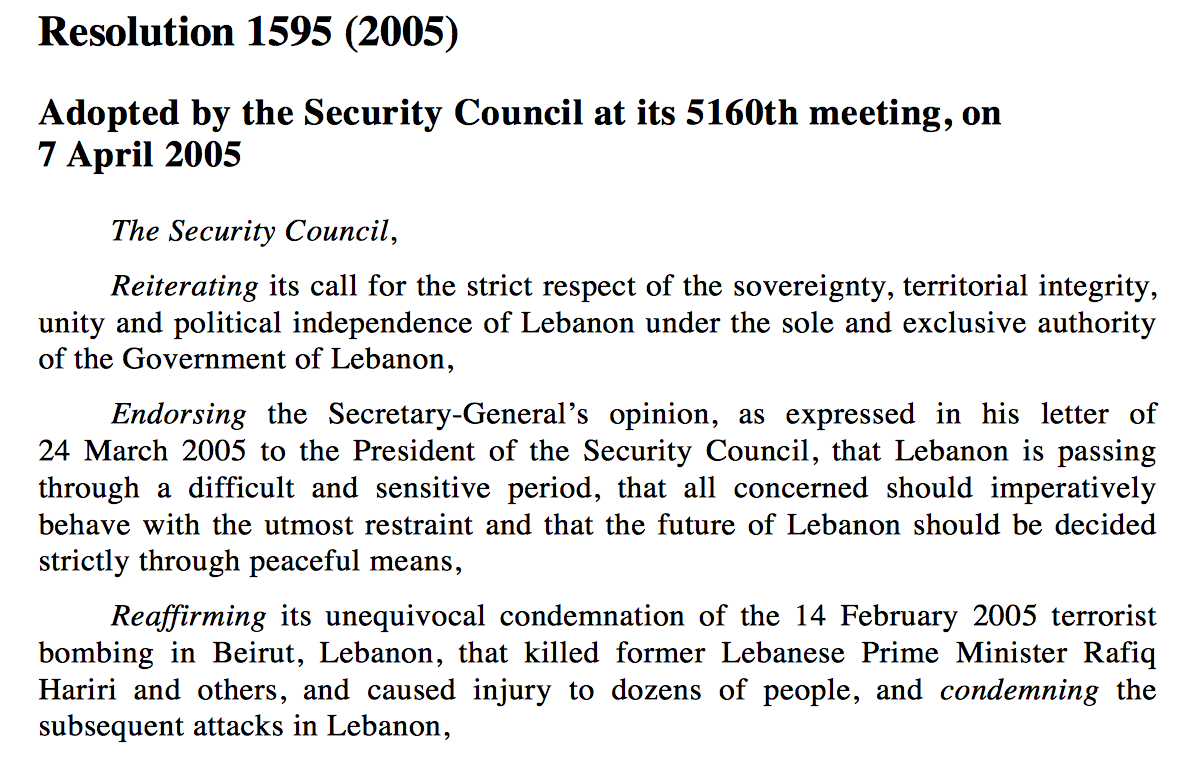





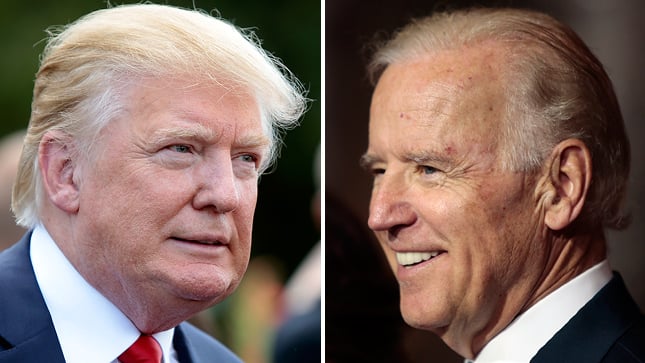

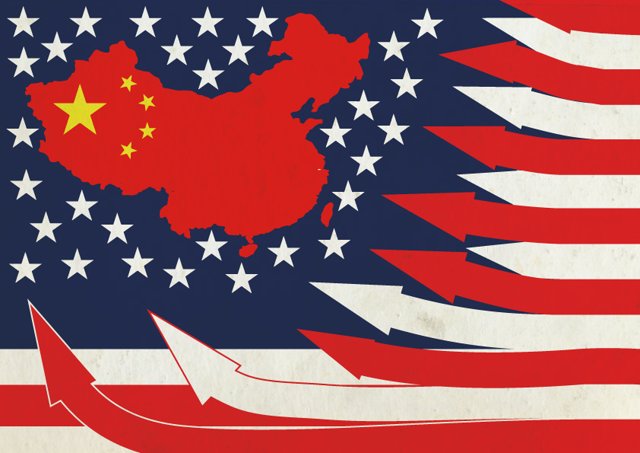



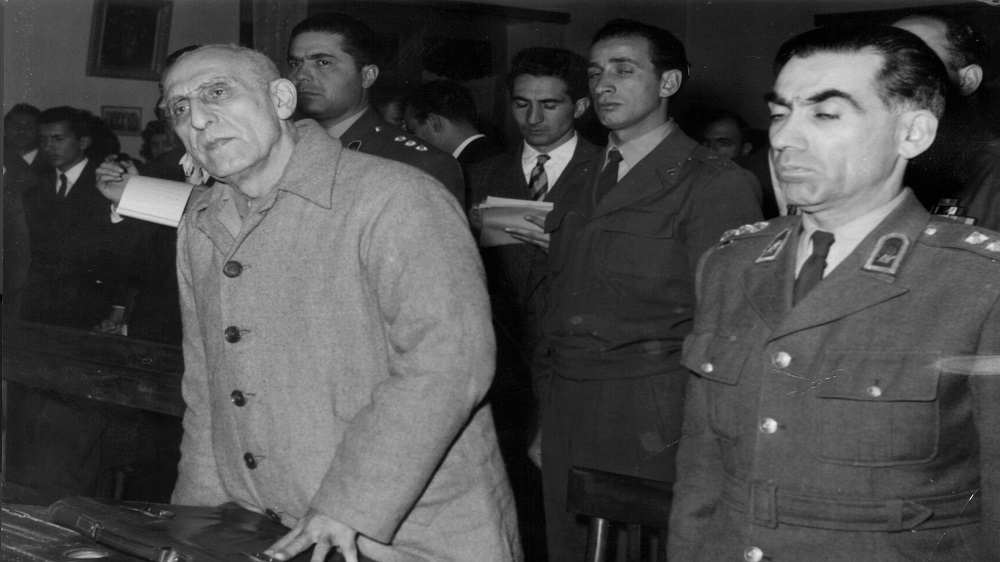

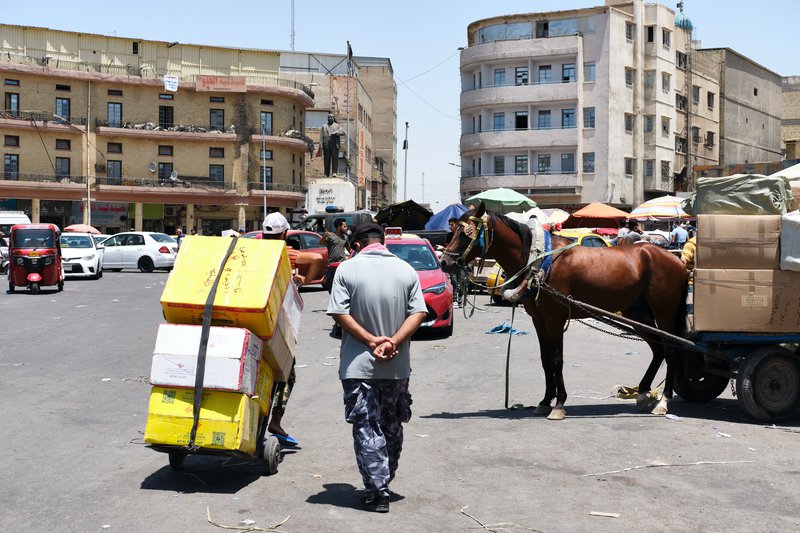


 Circle in the Darkness: Memoir of a World Watcher
Circle in the Darkness: Memoir of a World Watcher




